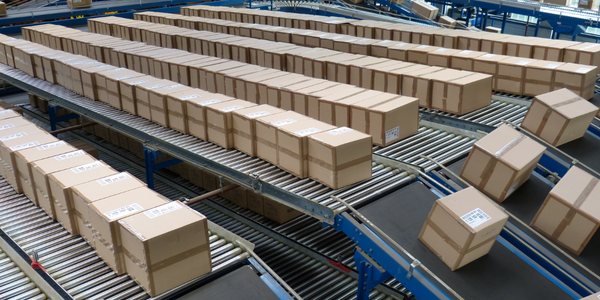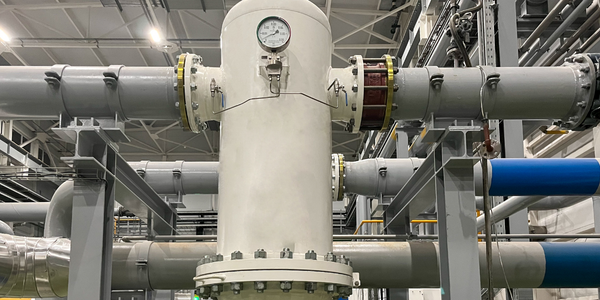Technology Category
- Analytics & Modeling - Real Time Analytics
- Sensors - Level Sensors
Applicable Industries
- National Security & Defense
- Packaging
Applicable Functions
- Logistics & Transportation
- Quality Assurance
Use Cases
- Inventory Management
- Tamper Detection
Services
- Cybersecurity Services
About The Customer
Optimal media GmbH is a subsidiary of Edel AG, one of Europe's leading independent media groups. The company is one of Europe’s most modern and innovative media services providers, with branches in Berlin, Hamburg, Stockholm, and London. Optimal media specializes in the production of high-quality printed materials and packaging, as well as the production of CDs, DVDs, Blu-ray discs, and records. It also operates a full-service print shop, digital distribution centers, a logistics and fulfillment center, an audio mastering studio, and an Authoring Studio. Its clientele includes well-known music labels and distributors, software companies, film studios and distributors, media and book publishers, agencies, artists, and industrial customers from Germany and worldwide.
The Challenge
Optimal media GmbH, a leading media services provider in Europe, faced significant challenges in protecting its intellectual property and preventing the loss of sensitive customer data. The company's IT department was responsible for network and IT security systems for all eight of Edel AG’s European offices. The data they received from customers for the production of CDs or records contained highly sensitive information and intellectual property that required robust protection. The International Federation of the Phonographic Industry (IFPI) audited the IT security systems at optimal media each year, and the company had always passed. However, the threat level was becoming increasingly critical, and the time required to prepare for the audits was becoming unmanageable. Their existing, outdated firewall solution was insufficient for long-term use as it could not handle unknown threats.
The Solution
Optimal media implemented Check Point Infinity architecture to achieve a new standard of security. The solution provided comprehensive protection and visibility for all network traffic, identifying and blocking all types of threats in real-time and classifying all applications and protocols. The high-performance security gateway, powered by Check Point Infinity R80.10 version, and using R80.10 security management, controlled all networks, users, applications, and data leveraging a unified security policy. The Data Loss Prevention (DLP) feature prevented sensitive information from leaving the organization from any application and protocol. Check Point’s zero-day threat prevention solution, SandBlast, prevented advanced threats and cyberattacks in real time, keeping them outside the network. The entire security was consolidated into a single platform managed by a unified, single-pane-of-glass management, providing complete protection.
Operational Impact
Quantitative Benefit

Case Study missing?
Start adding your own!
Register with your work email and create a new case study profile for your business.
Related Case Studies.

Case Study
IoT Data Analytics Case Study - Packaging Films Manufacturer
The company manufactures packaging films on made to order or configure to order basis. Every order has a different set of requirements from the product characteristics perspective and hence requires machine’s settings to be adjusted accordingly. If the film quality does not meet the required standards, the degraded quality impacts customer delivery causes customer dissatisfaction and results in lower margins. The biggest challenge was to identify the real root cause and devise a remedy for that.

Case Study
Zenon the Ideal Basis for An Ergonomic HMI
KHS develops and produces machines and equipment for filling and packaging in the drinks industry. Because drinks manufacturing, filling and packaging consist of a number of highly complex processes, the user-friendly and intuitive operation of equipment is increasingly gaining in significance. In order to design these processes as simple as possible for the user, KHS decided to introduce a uniform, transparent and standardized solution to the company. The HMI interface should meet the requirement for people with different qualifications and enable them to work on a standard platform.

Case Study
Data Capture for Afghanistan Forces
Electronic equipments on the field of Afghanistan provided information on the status of the vehicle and to identify potential threats surrounding it to the British Force. The monitoring and interpretation of this data requires robust and sophisticated digitization for data capture and communication.

Case Study
Sparks Dynamics Assists Atlas Container Secure a $15,000 BGE Energy Rebate
The ReMASTER Compressed Air Monitoring system was installed in 2015. This system is capable of monitoring compressed air system parameters on a continuous basis and transferring that information to a cloud server which can be accessed by Atlas Container personnel, Industrial Diagnostics and Sparks Dynamics. This information was collected into a database which can be exported to an Excel spreadsheet or displayed graphically using Sparks Dynamics ViewMaster Software. The average annual compressed air electricity expense was estimated to be approximately $116,000. This is based on an incremental $/KWh electric rate of $.091 per KWh and an estimated compressed air energy consumption of 1,279,200 KWH. The implementation phase of Energy Conservation Measures (ECMs) for the Compressed Air System included: • Identification and repair of compressed air leaks • Understanding of compressed air usage per manufacturing machine and installation of shut off valves when the machines are no longer in production mode • Identification of misapplications of compressed air to include blow offs, venturis, and cooling scenarios • Understand system pressure requirements and potential installation of point of use pressure regulation.

Case Study
Automated Pallet Labeling Solution for SPR Packaging
SPR Packaging, an American supplier of packaging solutions, was in search of an automated pallet labeling solution that could meet their immediate and future needs. They aimed to equip their lines with automatic printer applicators, but also required a solution that could interface with their accounting software. The challenge was to find a system that could read a 2D code on pallets at the stretch wrapper, track the pallet, and flag any pallets with unread barcodes for inspection. The pallets could be single or double stacked, and the system needed to be able to differentiate between the two. SPR Packaging sought a system integrator with extensive experience in advanced printing and tracking solutions to provide a complete traceability system.

Case Study
Mondi Implements Statistics-Based Health Monitoring and Predictive Maintenance
The extrusion and other machines at Mondi’s plant are large and complex, measuring up to 50 meters long and 15 meters high. Each machine is controlled by up to five programmable logic controllers (PLCs), which log temperature, pressure, velocity, and other performance parameters from the machine’s sensors. Each machine records 300–400 parameter values every minute, generating 7 gigabytes of data daily.Mondi faced several challenges in using this data for predictive maintenance. First, the plant personnel had limited experience with statistical analysis and machine learning. They needed to evaluate a variety of machine learning approaches to identify which produced the most accurate results for their data. They also needed to develop an application that presented the results clearly and immediately to machine operators. Lastly, they needed to package this application for continuous use in a production environment.



